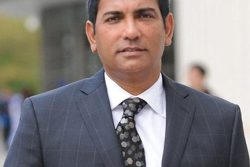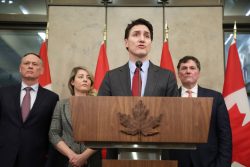Dear Editor,
This response is about deficiencies in the CARICOM Observer Report 2020. The first debatable issue is whether its 18% (423/2,399) sample size is a valid and reliable basis for its conclusions. One school of thought argues that a sample is adequate when expanding it adds nothing new to the pattern or trend of the findings. But to arrive at that correct size requires trials and errors. In many cases that is inconvenient to the researcher/investigator, and or costly in time and resources. Hence, based on experience and or intuition a researcher tends to decide on sample size. In some cases, sample size is determined by application of some formula. The more important thing is the composition and method of the sample. A 30% sample, for instance, would not necessarily be more valid than 18%. Generally, it is argued that the larger the sample, the more accurate the findings would be. But it is the composition of a sample that is more critical. Accuracy is more dependent on the representativeness and purpose of a sample. If for example, irregularities are concentrated in Grove Village, but the sample size for analysis is selected from the entire East Bank, there is no way what happened in Grove Village would appear significant. An 18% sample of Grove would be more accurate than a 30% sample of the entire East Bank.
Purpose is equally important. If we want to identify and particularize the pattern of irregularities, the samples must be based on the trouble areas with the larger lists or cluster of electors. That requires prior knowledge of the potential problematic communities so that neither time nor resources are wasted. Of the 2, 399 ballot boxes, 153 of those boxes would not contain more than 50 ballots. Historically polling stations of these boxes would not be manipulated because of the small numbers. If the purpose is to determine the significance of the irregularities as a percentage of the whole electorate, only in that sense a broad-based random sample would be an efficient method. Thus, it is important to ask, 18% of what? Does the sample capture the regional and community variations? Would cluster sampling or stratified sampling have been more efficient? By what characteristics were the samples selected? Why is there no consistent pattern of sampling across the Regions? One sees no scientific parameter by the observations were done and findings interpreted.
It is important to realize that winning the elections is one aspect of the issue. The balance of parliamentary power is another. Even if irregularities are insignificant to change who wins, they could make a difference in terms of the legislative balance of power. One cheated parliamentary seat could make a whole lot of difference. Unawareness of this is one of the critical deficiencies of the report. In a proportional representative system every irregularity and vote matter, unlike the constituency system.
Further, one revelation of implicit bias is in the emphasis that the process was an audit instead of a recount, yet the vigilance of party operatives is described as a fishing exercise. Heightened vigilance, wrong or right at times, is normal to these political processes, especially when the players are accustomed to “guerrilla politics”. Note too, that on page 3 the report recognizes that the Gazetted Order required an “audit” rather than a recount, yet on page 6 it states that “GECOM’s elaborate and unnecessary checklist … was suggestive of audit rather than a recount”. Technically, this alone qualifies the report as a C-grade report as it suggests that the observer team operated with confused or conflicting purpose, mission, and perspective.
Furthermore, is an inherent contradiction for the team to argue that the recount reflects the will of the people, and that it “categorically rejects” attempts to discredit the 2020 polls, yet describes the elections as reasonably credible which is subjective and ambiguous in meaning. In addition, the team cannot determine who benefitted from the “ghost voting” and voter impersonation but recommended a new voter list as priority. This suggests compromised logic. It is either that the elections were compromised but insufficient to undermine the will of the people, or that they were so reliable and credible that the results could be categorically defended. One cannot logically or morally defend an outcome categorically when the process at arriving at the results was compromised.
Yours faithfully,
Lin-Jay Harry-Voglezon
Editor-in-Chief’s note: The CARICOM team which comprised three persons was mandated to observe a recount of votes not to undertake a forensic examination. The votes for the March 2nd general elections have been counted twice and upheld on both occasions. First on the night of March 2nd when 2,339 different teams did their counts and agreed that everything was in order. One wonders what the mind-boggling odds would be that 2,339 teams of people conspired among themselves to ignore malpractices at their voting stations. Second, the votes were counted again during a painstaking 33-day exercise that included a range of observers and party agents. No substantial problems were detected. APNU+AFC agents – as part of the coalition’s zealous quest to hold power at any cost – were the only persons who raised objections. Many of these were specious or easily explained.








